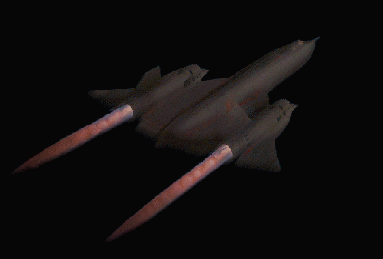|
HI GARY:
I NEVER WENT TO SCHOOL IN DUNSEITH. I ATTENDED SCHOOL IN ST. JOHN THROUGH PART OF THE FOURTH GRADE, AT WHICH TIME OUR FAMILY MOVED TO MT. IRON, MINNESOTA.
THANKS FOR ADDING ME TO YOUR LIST. I STILL REMEMBER SOME OF THE NAMES OF PEOPLE SUCH AS LLOYD AWALT AS THEY ALSO LIVED OUT HERE IN SOUTH GROVE(ADDITION TO MT. IRON). AND YES, KENROSE MEDLANG IS MY AUNT. ALSO HENRY SALMONSON IS MY UNCLE AND THEY ARE THE ONLY AUNT AND UNCLE I HAVE LEFT BACK THERE. I HAVE COUSINS THAT WE VISIT WITH AS OFTEN AS WE CAN, BUT NOW THAT MOST OF US ARE GRANDPARENTS, WE ARE BUSY TENDING TO LITTLE ONES ALSO.
THANKS AGAIN FOR INCLUDING ME, I WILL LOOK FORWARD TO MORE MESSAGES.
BONNIE
Ele Dietrich Slyter’s (69) reply to Karen Loeb Mhyre’s (65) Ice pictures:
Reply from Dick Johnson (68):
Gary and Friends,In reply to Gary Metcalfe, although I knew Alcide Lajimodier fairly well, I don’t know who his dad was. He lived with Ward and Annie Anthony south of Horseshoe Lake for a few years and I went there to visit several times. One time when winter had closed in and the lake froze over, I took an old gun and headed across Horseshoe Lake to hunt a bit on the way to Anthony’s. It was like going back in time. When I got to their place and walked up the steps and as I knocked on the door, I noticed a pancake in the window down behind the stove. They had me in and we sat around the table and Ward started his jargon about horses and the like. Then he said, “The damndest thing happened this morning. Ma was flipping pancakes and one never came down.” I told them it was behind the stove. Alcide and Ward jumped up and looked and then let fly with another banter about how dumb the other one was. They used to get so bored down there, they would start an argument just to have something to do! I saw it with my own eyes. Ward would say, “Yes it did.” Then Alcide would say, “No it didn’t.” Pretty soon it was, “You dumb ass, you wouldn’t know if it did or didn’t.” It was hilarious! They used to sit around the table and feed the dog candied orange slices, the fakey sugar kind. He was so fat he would lay on the floor and pant continually. I thought it couldn’t be good, just watching him. One time later when I was there, they were all sad so I asked what’s going on? They said, “Poco died– had a heart attack right there on the floor.” No doubt! I always thought Alcide was an uncle to Alice Bergan so she must have been a Lajimodier. I found out later she was a Laverdure, so I don’t know the connection. Gary’s mention of four gates on the road to Anthony’s was exactly right, I opened and closed them many times. As kids, Keith Smith and I would go down the trail south of their place, through all the gates, to Anthony’s. They were so far down in the woods, it was nearly an adventure just to get there. My old buddy, Carroll Carlson worked on the Miller ranch at Chinook, MT in the late 30s. He said Alcide showed up there as a ranch hand. He said Alcide was deathly afraid of snakes and would jump off a hay stack if someone yelled “snake”! Vickie Metcalfe confirmed the story, as her dad also said the same thing. I was at Kelvin when Alcide had a heart attack. I remember Richard Slyter and I were there with Leo and Betty Poitra, who took him to the hospital. He passed away later that night. I think Alcide was a veteran of WWII, but I’m not sure. Thanks Gary! Dick
Unidentified photo posted by Neola Kofoid Garbe:
Does anyone recognize this young lady?
 Posted by Randy Hiatt, Evan (Bing) Evans son:
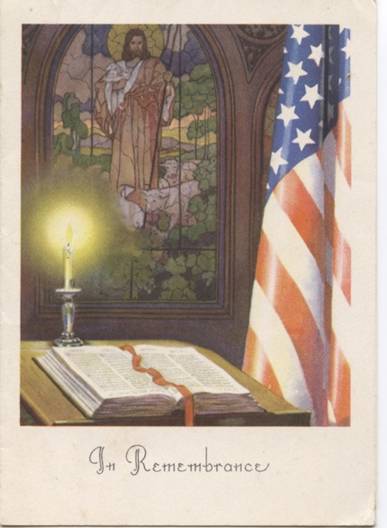  |
Ellen’s reply when I asked her if she was the Pilot and had been in the Air Force. GaryHi Gary,No I’m not the pilot…..don’t I wish I could have been. I don’t think it said who the pilot was since I sent the entire email to you – might need some editing?? Actually I taught English in North Dakota and Minnesota for 25 years and then quit that when I married an Air Force NCO who was an aircraft mechanic. After we married I started a 26 year civil service career with the Air Force working in Personnel and the Education Center. I retired from Grand Forks AFB in October 2005 and really enjoy the fact I don’t have to get cold since our home is usually about 75 degrees inside.When we were in California I worked at Norton AFB and the Detachment that took care of the 171 was two doors down. The planes weren’t stationed there but always made it to every Air Show. I did have occasion to go to the office of the personnel who took care of the 171 (kind of scary since the highest security clearance was required and an escort was required at al times). I was always very impressed with this plane and when one of my friends forwarded this today I thought I’d send it to you if you want to share it with the group.Thanks, Gary.Ellen
This was once a highly sensitive program at Norton AFB. SR-71 Blackbird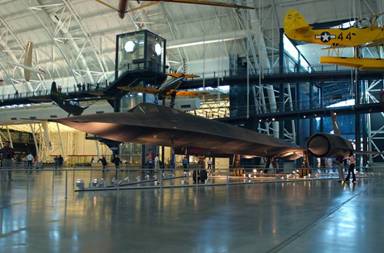
In April 1986, following an attack on American Soldiers in a Berlin disco, President Reagan Ordered the bombing of Muammar Qaddafi’s Terrorist camps in Libya . My duty was to fly Over Libya and take photos recording the Damage our F-111’s had inflicted.. Qaddafi Had established a ‘line of death,’ a territorial Marking across the Gulf of Sidra , swearing To shoot down any intruder that crossed the Boundary. On the morning of April 15, I rocketed past the line at 2,125 mph.
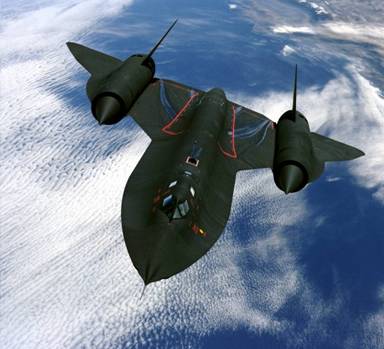
I was piloting the SR-71 spy plane, the world’s Fastest jet, accompanied by a Marine Major (Walt), The aircraft’s reconnaissance systems officer (RSO). We had crossed into Libya and were approaching Our final turn over the bleak desert landscape when Walt informed me that he was receiving missile Launch signals. I quickly increased our speed, Calculating the time it would take for the Weapons-most likely SA-2 and SA-4 surface-to-air Missiles capable of Mach 5 – to reach our altitude. I estimated that we could beat the rocket-powered Missiles to the turn and stayed our course, betting Our lives on the plane’s performance.
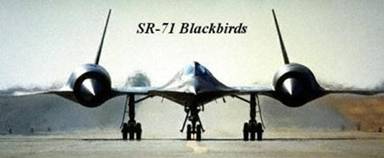
After several agonizingly long seconds, we made The turn and blasted toward the Mediterranean .. ‘You might want to pull it back,’ Walt suggested. It was then that I noticed I still had the throttles Full forward. The plane was flying a mile every 1.6 Seconds, well above our Mach 3.2 limit. It was The fastest we would ever fly. I pulled the throttles To idle just south of Sicily , but we still overran The refueling tanker awaiting us over Gibraltar.
Scores of significant aircraft have been produced In the 100 years of flight, following the achievements Of the Wright brothers, which we celebrate in December. Aircraft such as the Boeing 707, The F-86 Sabre Jet, and the P-51 Mustang are Among the important machines that have flown Our skies. But the SR-71, also known as the Blackbird, stands alone as a significant contributor To Cold War victory and as the fastest plane Ever-and only 93 Air Force pilots ever steered The ‘sled,’ as we called our aircraft.
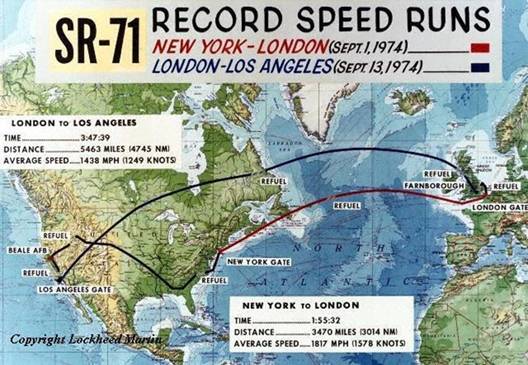
The SR-71 was the brainchild of Kelly Johnson, The famed Lockheed designer who created the P-38, the F-104 Starfighter, and the U-2. After The Soviets shot down Gary Powers’ U-2 in 1960, Johnson began to develop an aircraft that would Fly three miles higher and five times faster than The spy plane-and still be capable of photographing Your license plate. However, flying at 2,000 mph Would create intense heat on the aircraft’s skin. Lockheed engineers used a titanium alloy to Construct more than 90 percent of the SR-71, Creating special tools and manufacturing Procedures to hand-build each of the 40 planes. Special heat-resistant fuel, oil, and hydraulic Fluids that would function at 85,000 feet and Higher also had to be developed.
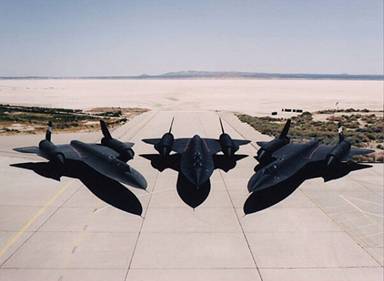
In 1962, the first Blackbird successfully flew, and In 1966, the same year I graduated from high school, The Air Force began flying operational SR-71 missions. I came to the program in 1983 with a sterling record And a recommendation from my commander, Completing the weeklong interview and meeting Walt, my partner for the next four years He would Ride four feet behind me, working all the cameras, Radios, and electronic jamming equipment. I joked That if we were ever captured, he was the spy and I was just the driver. He told me to keep the pointy End forward.
We trained for a year, flying out of Beale AFB in California , Kadena Airbase in Okinawa , and RAF Mildenhall in England . On a typical training mission, We would take off near Sacramento , refuel over Nevada, accelerate into Montana , obtain high Mach Over Colorado , turn right over New Mexico , speed Across the Los Angeles Basin , run up the West Coast, Turn right at Seattle , then return to Beale. Total flight Time: two hours and 40 minutes. One day, high above Arizona , we were monitoring The radio traffic of all the mortal airplanes below us. First, a Cessna pilot asked the air traffic controllers To check his ground speed. ‘Ninety knots,’ ATC replied. A Bonanza soon made the same request. ‘One-twenty on the ground,’ was the reply. To our surprise, a navy F-18 came over the radio with a ground speed check. I knew exactly what he was doing. Of course, he had a ground speed indicator in his cockpit, but he wanted to let all the bug-smashers in the valley know what real speed was ‘Dusty 52, we show you at 620 on the ground,’ ATC responded. The situation was too ripe. I heard the click of Walt’s mike button in the rear seat. In his most innocent voice, Walt startled the controller by asking for a ground speed check from 81,000 feet, clearly above controlled airspace. In a cool, professional voice, the controller replied, ‘ Aspen 20, I show you at 1,982 knots on the ground.’ We did not hear another transmission on that frequency all the way to the coast. 
The Blackbird always showed us something new, each aircraft possessing its own unique personality. In time, we realized we were flying a national treasure. When we taxied out of our revetments for takeoff, people took notice. Traffic congregated near the airfield fences, because everyone wanted to see and hear the mighty SR-71 You could not be a part of this program and not come to love the airplane. Slowly, she revealed her secrets to us as we earned her trust.
One moonless night, while flying a routine training mission over the Pacific, I wondered what the sky would look like from 84,000 feet if the cockpit lighting were dark. While heading home on a straight course, I slowly turned down all of the lighting, reducing the glare and revealing the night sky. Within seconds, I turned the lights back up, fearful that the jet would know and somehow punish me. But my desire to see the sky overruled my caution, I dimmed the lighting again. To my amazement, I saw a bright light outside my window. As my eyes adjusted to the view, I realized that the brilliance was the broad expanse of the Milky Way, now a gleaming stripe across the sky. Where dark spaces in the sky had usually existed, there were now dense clusters of sparkling stars. Shooting stars flashed across the canvas every few seconds. It was like a fireworks display with no sound. I knew I had to get my eyes back on the instruments, and reluctantly I brought my attention back inside. To my surprise, with the cockpit lighting still off, I could see every gauge, lit by starlight. In the plane’s mirrors, I could see the eerie shine of my gold spacesuit incandescently illuminated in a celestial glow. I stole one last glance out the window. Despite our speed, we seemed still before the heavens, humbled in the radiance of a much greater power. For those few moments, I felt a part of something far more significant than anything we were doing in the plane. The sharp sound of Walt’s voice on the radio brought me back to the tasks at hand as I prepared for our descent. 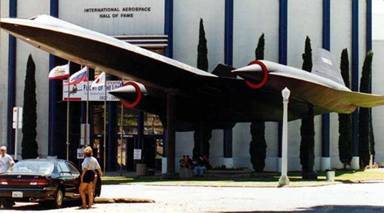 San Diego Aerospace Museum
San Diego Aerospace Museum
The SR-71 was an expensive aircraft to operate. The most significant cost was tanker support, and in 1990, confronted with budget cutbacks, the Air Force retired the SR-71.
The SR-71 served six presidents, protecting America for a quarter of a century. Unbeknownst to most of the country, the plane flew over North Vietnam , Red China , North Korea , the Middle East , South Africa , Cuba , Nicaragua , Iran , Libya , and the Falkland Islands . On a weekly basis, the SR-71 kept watch over every Soviet nuclear submarine and mobile missile site, and all of their troop movements. It was a key factor in winning the Cold War.
I am proud to say I flew about 500 hours in this aircraft. I knew her well. She gave way to no plane, proudly dragging her sonic boom through enemy backyards with great impunity. She defeated every missile, outran every MiG, and always brought us home. In the first 100 years of manned flight, no aircraft was more remarkable. The Blackbird had outrun nearly 4,000 missiles, not once taking a scratch from enemy fire. On her final flight, the Blackbird , destined for the Smithsonian National Air and Space Museum, sped from Los Angeles to Washington in 64 minutes, averaging 2,145 mph and setting four speed records

